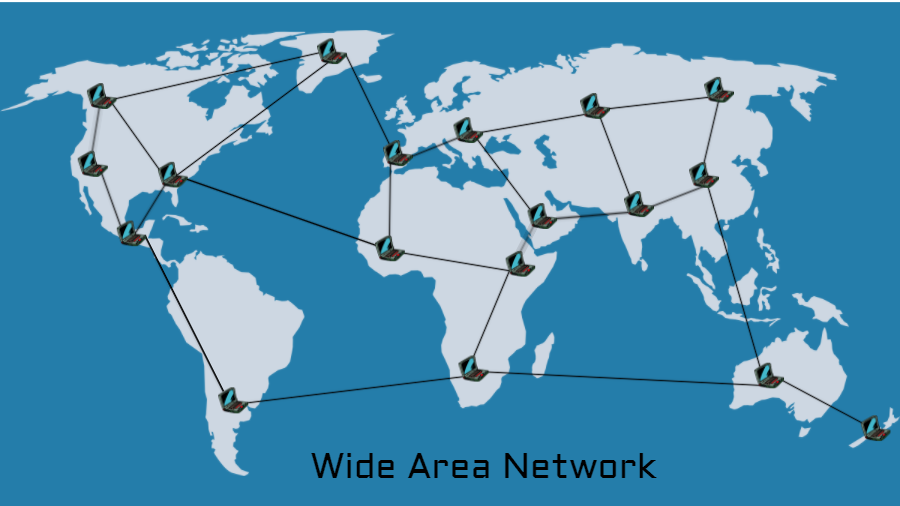LAN(LOCAL AREA NETWORK)
A local area network (LAN) is a group of computers and associated devices that share a common communications line or wireless link to a server. Typically, a LAN encompasses computers and peripherals connected to a server within a distinct geographic area such as an office or a commercial establishment. Computers and other mobile devices use a LAN connection to share resources such as a printer or network storage.

MAN(METROPOLITAN AREA NETWORK)
A metropolitan area network (MAN) is a network that interconnects users with computer resources in a geographic area or region larger than that covered by even a large local area network (LAN) but smaller than the area covered by a wide area network (WAN). The term is applied to the interconnection of networks in a city into a single larger network (which may then also offer efficient connection to a wide area network). It is also used to mean the interconnection of several local area networks by bridging them with backbone lines. The latter usage is also sometimes referred to as a campus network.
Examples of metropolitan area networks of various sizes can be found in the metropolitan areas of London, England; Lodz, Poland; and Geneva, Switzerland. Large universities also sometimes use the term to describe their networks. A recent trend is the installation of wireless MANs.

WAN(WIDE AREA NETWORK)
A wide area network (WAN) is a geographically distributed private telecommunications network that interconnects multiple local area networks (LANs). In an enterprise, a WAN may consist of connections to a company's headquarters, branch offices, colocation facilities, cloud services and other facilities. Typically, a router or other multifunction device is used to connect a LAN to a WAN. Enterprise WANs allow users to share access to applications, services and other centrally located resources. This eliminates the need to install the same application server, firewall or other resource in multiple locations.

WHAT THE DIFFERENCE BETWEEN LAN, MAN, AND WAN
| Parameters | LAN | MAN | WAN |
|---|---|---|---|
| Full Form | Local Area Network | Metropolitan Area Network | Wide Area Network |
| What is it? |
• Systems are close to each other in LAN
• contained in one office or building
• one organization can have several LANs
| • Large network which connects different organizations |
• Two or more LANs connected
• Located over large geographical area
|
Distance
coverage
| Limited coverage, about upto 2 miles(or 2500 meters) | Limited coverage, about upto 100 miles(or 200 km) | Unlimited (usually in 1000Km) range, uses repeater and other connectivity for range extension |
Speed of
operation
| High, typically 10, 100 and 1000 Mbps | High, typically 100 Mbps | Slow, about 1.5 Mbps (May vary based on wireless technologies used) |
Technologies
used for medium
| Locally installed, twisted pair, fiber optic cable, wireless (e.g. WLAN, Zigbee) | Locally installed and based on common carrier e.g. twisted pair, fiber optic cable etc. | Locally installed and based on common carrier e.g. twisted pair wires, fiber, coaxial cable, wireless including wireless and cellular network based |
| Applications | Used mainly by fixed desktop computers and portable computers (e.g. laptops) . Now-a-days it is used by smart phones due to emergence of WLAN network | Used mainly by desktop and mini computers. | Can be used by any devices, but desktop devices are mainly using this network type. |
No comments:
Post a Comment